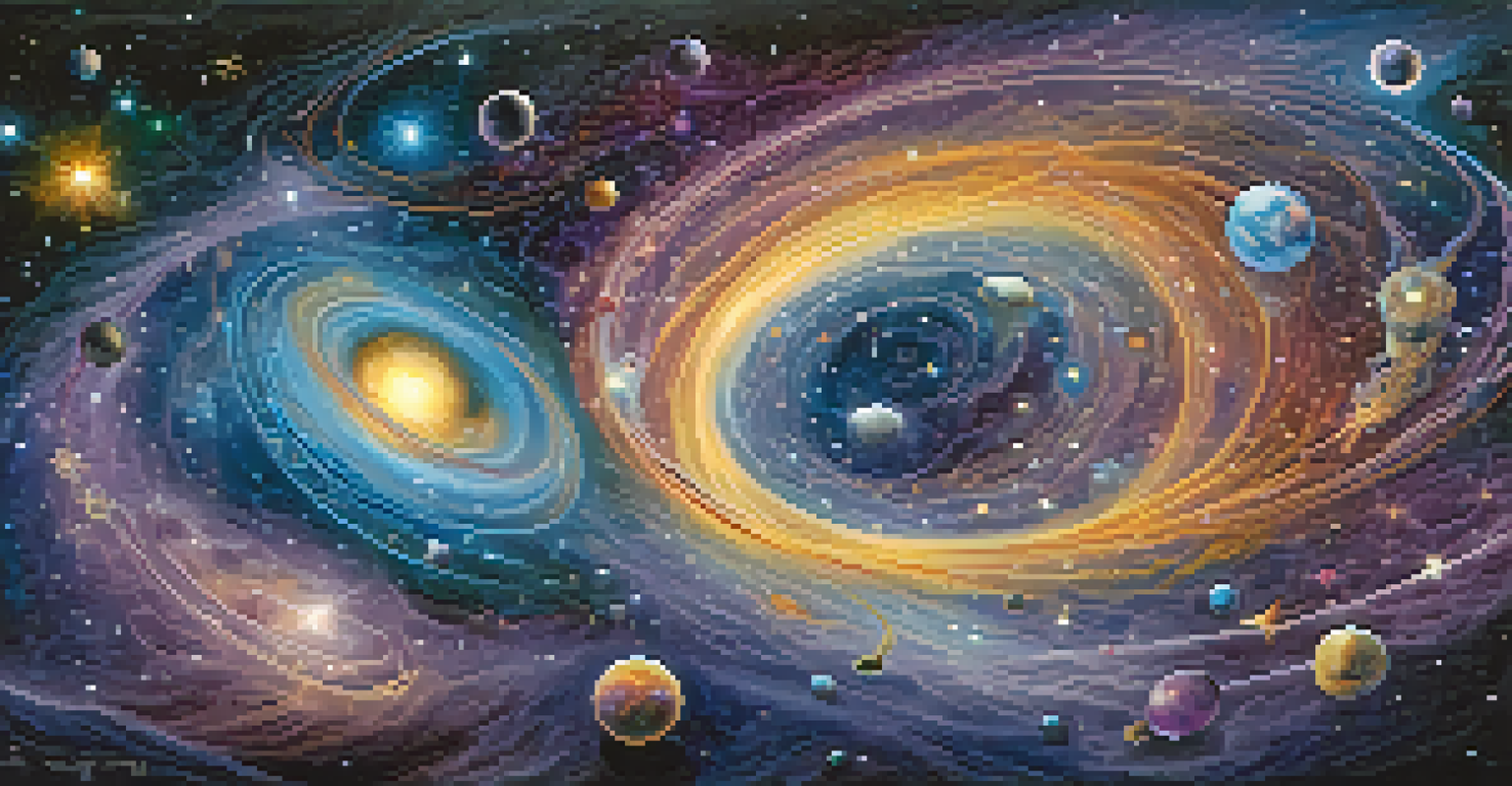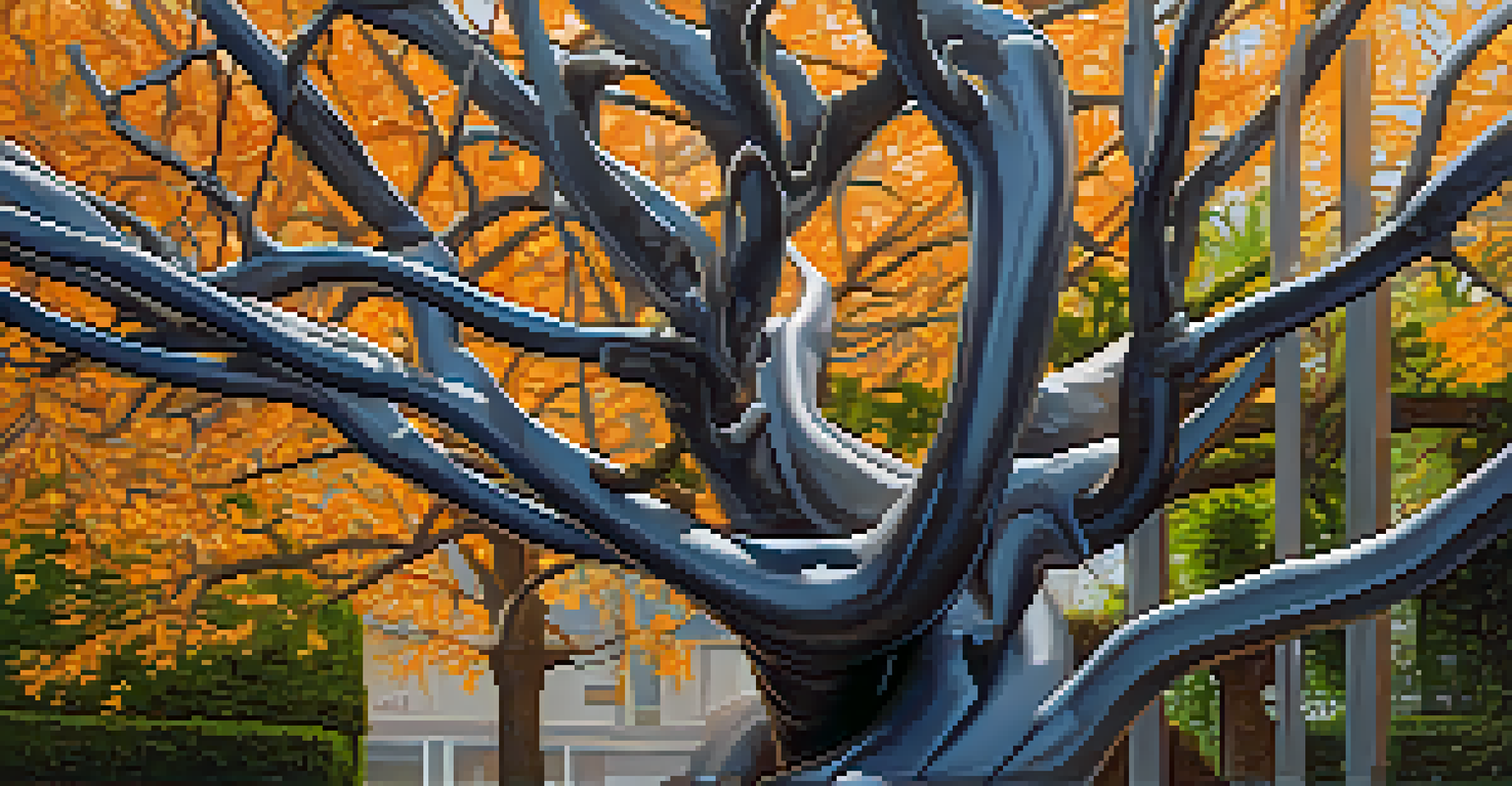The Intersection of Science and Art in Interdisciplinary Learning

Understanding the Basics of Interdisciplinary Learning
Interdisciplinary learning involves combining multiple fields of study to enrich education. It allows students to see connections between subjects, fostering a more holistic understanding. For example, a project that includes both biology and visual arts can lead to a deeper appreciation of natural forms and ecosystems.
Art is the most beautiful of all lies; it is a truth that reveals the beauty of the universe.
This approach encourages creativity and critical thinking, skills essential in today’s world. When students engage in interdisciplinary projects, they often feel more motivated and invested in their learning. The blending of disciplines challenges them to think outside the box and find innovative solutions.
In essence, interdisciplinary learning breaks down traditional barriers between subjects, creating a more engaging and relevant educational experience. This method not only enhances knowledge retention but also prepares students for real-world applications where various fields intersect.
The Role of Art in Scientific Inquiry
Art plays a significant role in scientific inquiry by offering new perspectives and ways of thinking. For instance, artists often use scientific principles to create their work, such as understanding light and color in painting or the anatomy of the human body in sculpture. This relationship demonstrates that art and science are not mutually exclusive but rather complementary.

Additionally, scientific visualization—creating visual representations of data—relies heavily on artistic skills. These visuals help communicate complex scientific concepts in a more digestible format, making them accessible to a broader audience. Think of infographics that convey climate change data; they combine artistry with factual information to engage viewers effectively.
Interdisciplinary Learning Benefits
Combining science and art enriches education by fostering creativity, critical thinking, and real-world problem-solving.
By integrating art into science, educators can encourage students to approach problems creatively and collaboratively. This fusion not only enhances understanding but also inspires a sense of wonder and curiosity about the world.
How Science Inspires Artistic Expression
Conversely, science can inspire artistic expression by providing a wealth of subject matter. Scientific discoveries, from the structure of DNA to the vastness of space, have sparked countless artistic creations. Artists often draw on these themes to explore human existence, our place in the universe, and the intricacies of life.
Science and art belong to the whole world, and before them vanish the barriers of nationality.
For example, the famous painter Vincent van Gogh was influenced by the stars and the night sky, which can be seen in his iconic work 'Starry Night.' This connection between science and art illustrates how both disciplines influence each other and can lead to meaningful conversations about existence and the universe.
By encouraging students to explore scientific concepts through art, educators can foster a deeper emotional connection to the material. This not only enhances creativity but also promotes a greater understanding of scientific principles.
Benefits of Combining Science and Art in Education
Combining science and art in education offers numerous benefits, including improved engagement and retention. Students who study subjects through an interdisciplinary lens often find greater relevance in their learning. This approach helps them develop a broader skill set that includes problem-solving, innovation, and critical thinking.
Moreover, integrating art into scientific curricula can cater to diverse learning styles. Visual learners, for instance, may thrive when presented with artistic representations of scientific concepts. This inclusivity ensures that all students can connect with the material in a way that resonates with them.
Art Enhances Scientific Inquiry
Integrating art into science provides new perspectives and improves communication of complex scientific concepts through visual representation.
Ultimately, this combination prepares students for future careers where creativity and analytical thinking are vital. In a world that increasingly values interdisciplinary skills, such an educational approach is not just beneficial but essential.
Case Studies: Successful Interdisciplinary Programs
Several educational institutions have successfully implemented interdisciplinary programs that combine science and art. For instance, the STEAM (Science, Technology, Engineering, Arts, and Mathematics) initiative emphasizes the importance of integrating the arts into STEM education. Schools that adopt this framework often see increased student engagement and creativity.
One notable example is the 'Art and Science' program at a Massachusetts high school, where students create art inspired by scientific principles. Projects include creating sculptures that reflect biological processes or using photography to capture astronomical phenomena. These hands-on experiences not only enhance learning but also result in impressive portfolios for students.
Such case studies illustrate the potential of interdisciplinary learning to inspire and engage students. By showcasing successful examples, educators can encourage the adoption of similar programs in their own institutions.
Challenges in Integrating Science and Art
Despite the many benefits, integrating science and art into curricula is not without its challenges. One major hurdle is the curriculum's rigid structure, which often prioritizes standardized testing and subject separation. This can make it difficult for educators to implement interdisciplinary projects that require time and flexibility.
Additionally, teachers may feel unprepared to teach outside their subject expertise. For example, a science teacher might struggle to incorporate artistic elements into their lessons. Professional development and collaborative planning can help bridge this gap, empowering teachers to embrace interdisciplinary approaches.
Challenges in Curriculum Integration
Despite its advantages, interdisciplinary integration faces hurdles like rigid curricula and teacher preparedness that need addressing.
Addressing these challenges is crucial for creating a learning environment that values both scientific inquiry and artistic expression. With the right support and resources, educators can overcome these obstacles and create a more integrated educational experience.
The Future of Interdisciplinary Learning
As we look to the future, the intersection of science and art in education will likely continue to evolve. With advancements in technology, new tools and platforms can facilitate creative collaboration between disciplines. For instance, virtual reality can immerse students in scientific environments while offering artistic exploration.
Moreover, as the global job market increasingly demands interdisciplinary skills, educational systems will need to adapt. Schools that prioritize the integration of science and art will better prepare students for future challenges and opportunities. This evolution in education will nurture innovators who can think critically and creatively.

Ultimately, fostering an appreciation for both science and art in learning environments can lead to a more rounded, capable generation. By embracing this intersection, we can inspire students to pursue knowledge and creativity in tandem.